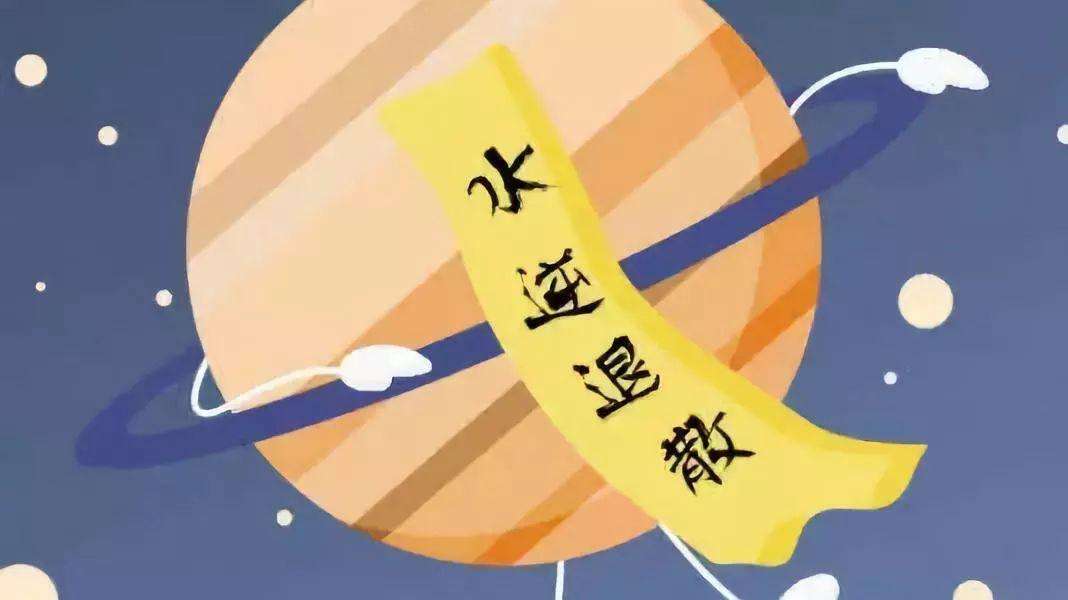You may have heard that Mercury is retrograde again.
你或许也听过‘水星又逆行了’(又水逆了)这句话。
But if you try to find out what that means,
但如果你想弄清楚这句话究竟是什么意思,
search results are dominated by astrologers who believe Mercury can make you spill coffee on your favorite shirt or cause your car to break down.
上网搜的话,搜出来的大多都是占星家的看法,而他们认为,你最爱的T恤撒上了咖啡,车子抛锚什么的都是因为水逆。
But if you set aside all those creative interpretations,
但若暂且抛开这些脑洞满满的解释,
there’s actually a real astronomical phenomenon underneath.
你会发现,这背后确实隐藏着一种天文现象。
So let’s start with the basic layout of our solar system.
我们不妨先从太阳系的基本布局开始说起。
The planets closest to the sun move faster and the outer planets move slower,
离太阳最近的行星公转速度最快,外围的行星慢一些,
but they all go in the same direction.
但它们公转的方向是一致的。
“Apparent retrograde motion” is when planets appear to temporarily change the direction of their orbit.
“逆行假象”就是从表面来看,某些行星在某个点临时改变运转方向的现象。
They don’t change direction, it just looks that way from Earth.
但它们并没有真的改变方向,这种现象只不过是从地球上观测产生的错觉。
It’s an illusion that unfolds over a matter of weeks or months.
这种错觉会持续数周甚至数月。
In this image, Mars was photographed every 5-7 days between October 2011 and July 2012.
2011年10月到2012年7月,有人每隔5~7天就拍摄一次火星的位置,最后就有了这张图。
Once all the photos were combined by aligning the stars in the background,
按照背景中恒星的位置将所有照片拼到一起,
it appears as though Mars looped back on itself before continuing on its orbit.
就会给人一种火星在公转的某个时间点会逆行一小段(再继续顺行)的感觉。
A retrograde illusion happens when we lap an outer planet, like we do with Mars every 2 years,
逆行假象往往会在两种情形下出现:我们(地球)领先外围行星的时候,比如地球每两年就会领先火星一次;
or when an inner planet laps Earth, like Mercury does every 4 months or so.
或者内围行星领先地球的时候,比如水星每四个月左右就会领先地球一次。
But for both Mercury and Venus, the illusion is hard to actually capture since they’re located on Earth’s day side, not our night side.
但我们很难拍到水星和金星这两个行星的逆行假象,因为它们都在地球的白昼侧而非地球的夜侧。
When those planets are visible, it’s only right around sunset and sunrise.
我们看见这些行星时就已经是日落或日出前后了。
But assuming you could see it,
就假设我们能看到水星,
here’s a diagram of how the Mercury retrograde illusion would work.
这里有一张水星逆转假象的原理图。
This line shows our view of Mercury against the background stars.
这条线要展示的是我们能在星空背景下看到水星位置的变化。
As Mercury passes us by,
水星和我们擦肩而过,
our line of sight shifts so that for about 3 weeks Mercury will appear to loop back on itself when viewed from Earth.
我们看到的水星位置一直在变,结果就是,有大约3周的时间,水星看上去像是逆行了一小圈一样。

It’s simply a function of two objects orbiting in the same direction at different speeds.
其实就是两个物体以不同的速度沿着同一方向做圆周运动的一个函数。
If you stood on Mercury, you would see Earth make an apparent loop too.
如果站在水星上观测,你会看到,地球也有逆行假象。
I wanted to recreate this illusion on a tabletop
我想在桌子上重现一下这个假象,
so I stuck a post-it note to the wall in the background to represent the fixed stars.
于是,我就在充当背景的墙上贴了一张便利贴,代表位置不变的星星。
I grabbed a ball of play-doh to be Mercury and my phone camera is Earth.
又随便拿了个橡皮泥小球当水星,手机相机充当的是地球。
I took 10 photos of them orbiting in the same direction with Mercury passing by Earth.
我拍了10张“水星”和“地球”在沿着同一方向做圆周运动时擦肩而过的照片。
If you simply view the images in sequence, you don’t really see the loop,
如果你只挨个看拍出来的照片,你是看不到“水星”绕圈的现象的,
but remember, the illusion is relative to the background of fixed stars.
不过,记住了,假象是在以星空背景为参照的时候出现的。
So once you line up the images so that that post-it note star is fixed, the retrograde loop appears.
所以,当我们把拍出来的照片按照便利贴星星位置固定的方式给它排起来的时候,逆方向绕圈的现象就出现了。
Here’s another visualization of the retrograde loop of Mars as Earth passes it.
我们再来看一个地球与火星擦肩而过时火星逆转假象的图像。
The bottom part shows the positions of the planets and the top is the corresponding view of Mars from Earth.
图片下半部分显示的是两颗行星的位置关系,上面部分显示的是从地球上看到的火星的运动轨迹。
The key is to always remember that Earth is moving too.
关键是始终要记住,地球也在移动。
So retrograde motion was baffling to early astronomers who thought that Earth was stationary and at the center of the solar system.
逆转运动是早期天文学家比较困惑的一个问题,因为他们觉得地球是静止的,是太阳系的中心。
In the 2nd century, Ptolemy devised a complicated system of loops and orbits within orbits
公元2世纪,为了解释行星的逆转假象,
to account for the apparent retrograde motion of planets.
托勒密设计了一个非常复杂的环路和轨道内还有轨道的实验装置。
That model was accepted for 1500 years because it seemed to fit the observations, even though it was completely wrong.
这个模型被沿用了1500年,因为表面来看,它是符合我们的观测结果的,实际上则完全搞错了。
Once Copernicus showed that all the planets, including Earth, move around the sun,
后来,哥白尼证明,所有的行星,包括地球,都是围绕太阳运转的,
then retrograde motion was easily explained as an illusion.
这时,逆转运动就很容易解释成一种假象了。
So if there’s any life lessons to learn from Mercury retrograde,
如果非要说水星逆行这一现象能给我们什么启示的话,
it’s that we may be vulnerable to illusions when we think everything revolves around us.
启示就是我们觉得一切都是围绕我们而转的时候会很容易陷入错觉。
It's really frustrating how misleading the scale is on every illustration of the solar system,
让人郁闷的是,每一张太阳系图解的比例尺都非常有迷惑性,
so I feel compelled to point out that the real distance between Earth and Mercury,
所以我觉得有必要给大家指出来,地球和水星之间的距离其实是非常远的,
when those planets are closest together, is more than 6,000 times the diameter of Earth.
两者最近的距离也有地球直径的6000多倍。












